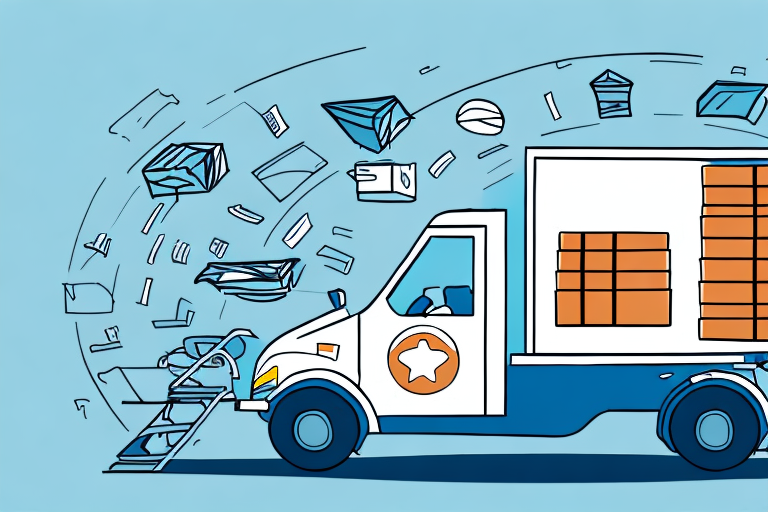The Benefits of Dropoff Delivery for Your Business
Online shopping has revolutionized the retail industry, creating a demand for efficient delivery systems that offer speed, reliability, and convenience for both businesses and consumers. Dropoff delivery, also known as last-mile delivery, provides same-day or two-hour delivery options within a certain radius. This article explores the benefits of dropoff delivery and how it can enhance your business operations.
Understanding Dropoff Delivery
What is Dropoff Delivery?
Dropoff delivery is an on-demand service that enables businesses to deliver goods to customers within a short time frame, typically two hours. Powered by advanced technology, it allows businesses to schedule and track deliveries in real-time, ensuring orders are dispatched based on precise delivery requirements.
How Does It Work?
Businesses partner with dropoff delivery providers that offer platforms for scheduling and tracking. This integration allows seamless dispatching of orders to customers, enhancing control over delivery operations and enabling real-time monitoring. The flexibility provided by dropoff delivery helps reduce delivery times, improve customer satisfaction, and increase sales.
Additionally, dropoff delivery is cost-effective as it eliminates the need for maintaining a personal delivery fleet and infrastructure.
Market Trends and Growth
The Rise of Dropoff Delivery
Dropoff delivery has surged in popularity due to evolving consumer demands for faster and more convenient shipping options. According to a Grand View Research report, the global last-mile delivery market is projected to reach $94.2 billion by 2027, driven by the expansion of the e-commerce industry and the increasing demand for expedited delivery services.
Adoption Drivers
- Technology Advancements: Real-time tracking and dispatching technologies streamline delivery operations.
- Gig Economy: The rise of gig workers provides scalable delivery solutions.
- Consumer Preferences: Preference for flexible delivery options, such as lockers and parcel shops.
- Sustainability: Efficient routing reduces carbon emissions, appealing to environmentally conscious consumers.
Implementing Dropoff Delivery in Your Business
Steps to Integration
- Select a Reliable Partner: Choose a dropoff delivery provider that offers robust scheduling and tracking platforms.
- Integrate Technology: Incorporate the provider’s platform into your existing systems, such as your e-commerce website or POS system.
- Train Your Team: Educate your staff on packaging and dispatching orders effectively.
Considerations and Limitations
While dropoff delivery offers numerous benefits, it may not suit all businesses. Products requiring special handling or refrigeration might need alternative delivery solutions. Additionally, it may not be cost-effective for businesses with a limited number of orders or a restricted delivery radius.
Cost and Environmental Benefits
Cost Savings
Outsourcing delivery operations to a third-party provider eliminates expenses related to maintaining a delivery fleet, hiring drivers, and managing logistics. Dropoff delivery services offer scalability, allowing businesses to adjust their delivery capacity based on demand without incurring additional costs.
Reducing Carbon Footprint
Dropoff delivery helps minimize environmental impact by consolidating deliveries, reducing the number of vehicles on the road, and utilizing eco-friendly transportation options like electric vehicles or bicycles. Additionally, consolidated packaging reduces packaging waste, contributing to sustainability efforts.
Enhancing Customer Satisfaction
Fast and Flexible Delivery Options
Customers appreciate the ability to receive their orders within hours rather than days. This speed can significantly reduce cart abandonment rates and foster customer loyalty, as shoppers are more likely to return to businesses that offer reliable and swift delivery services.
Customer Control and Convenience
Dropoff delivery allows customers to choose their preferred delivery time and location, whether it’s their home, workplace, or a designated pickup point. This flexibility minimizes missed deliveries and enhances the overall customer experience.
Technology and Future Innovations
The Role of Technology
Advanced technologies such as real-time tracking, AI-driven route optimization, and blockchain for enhanced security are pivotal in streamlining dropoff delivery operations. These technologies ensure efficient management of deliveries and provide transparency to customers regarding their order status.
Future Developments
Innovations like drone delivery and autonomous vehicles are set to revolutionize the delivery industry further. These technologies promise increased efficiency and reduced delivery times, shaping the future landscape of dropoff delivery services.
Case Studies and Success Stories
Prominent companies like Amazon Prime, Instacart, and Postmates have successfully integrated dropoff delivery into their operations. These businesses have enhanced delivery speeds, reduced operational costs, and provided flexible delivery options, setting benchmarks for others to follow.
Overcoming Challenges
Managing Delivery Costs
Balancing delivery costs while maintaining quality is a common challenge. Businesses must negotiate favorable terms with delivery partners and optimize delivery routes to manage expenses effectively.
Ensuring Delivery Quality
Maintaining consistent delivery standards is crucial for customer satisfaction. Implementing robust training programs for delivery personnel and utilizing technology for monitoring can help uphold quality.
Handling Unexpected Issues
Traffic delays, package theft, and other unforeseen issues can disrupt delivery operations. Developing contingency plans and ensuring timely communication with customers can mitigate these challenges.
Conclusion
Dropoff delivery offers significant advantages for businesses, including cost savings, enhanced customer satisfaction, and reduced environmental impact. By effectively implementing and managing dropoff delivery services, businesses can stay competitive in the fast-paced e-commerce landscape, improve their bottom line, and foster customer loyalty.




















